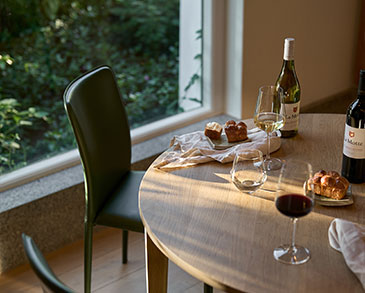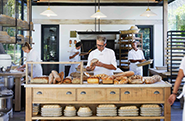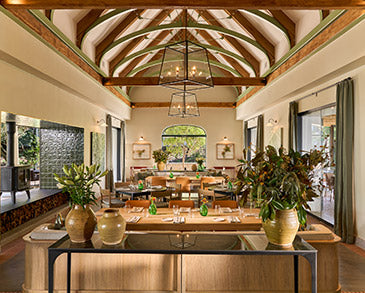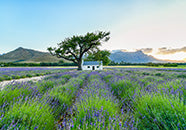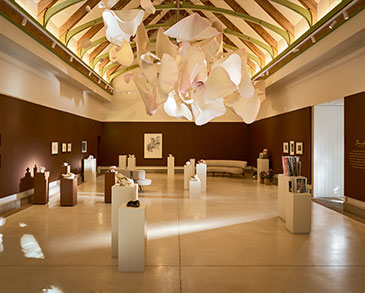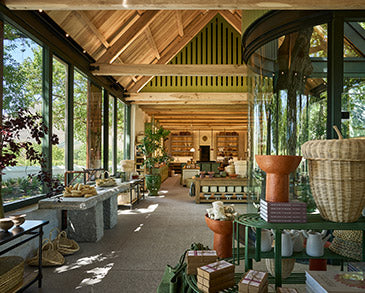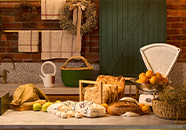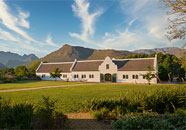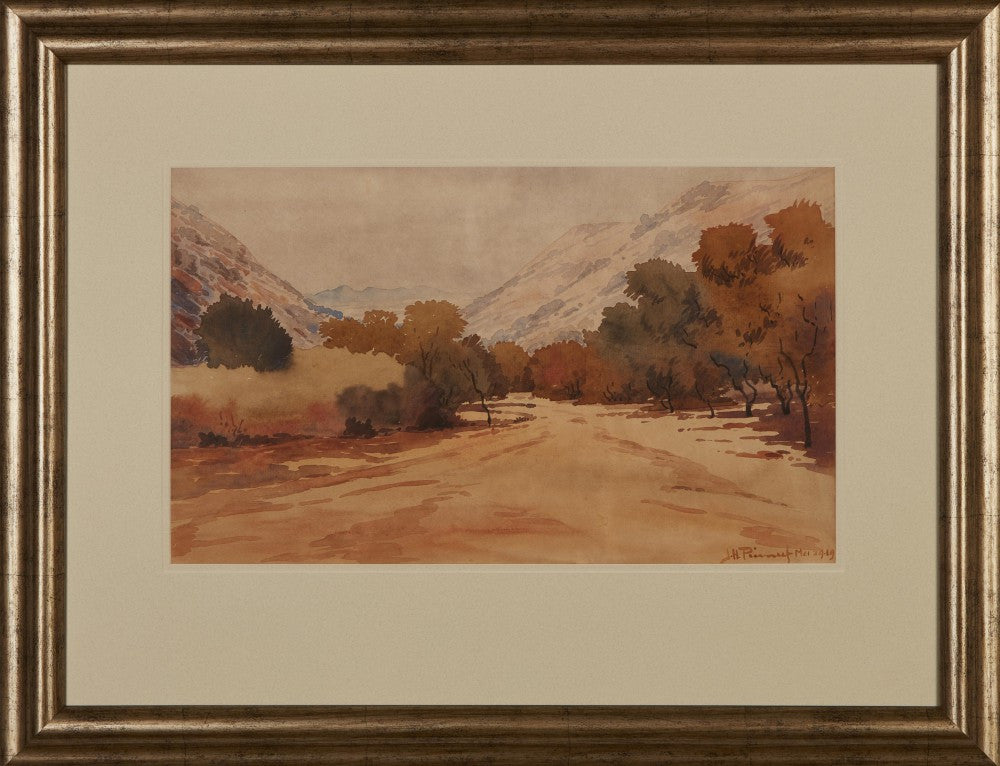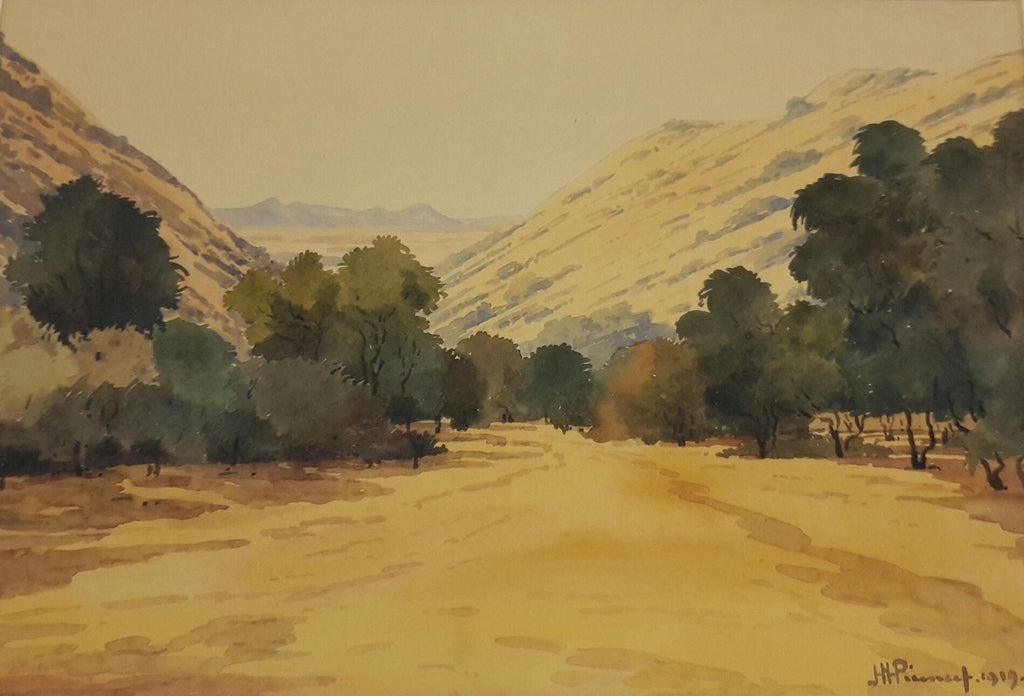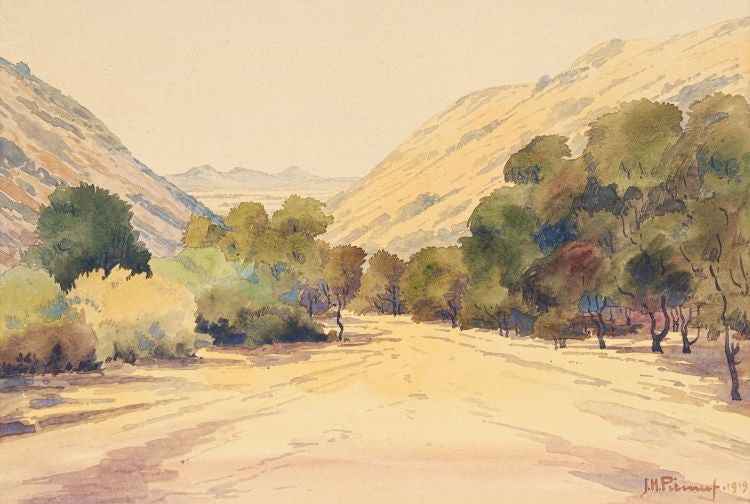Persepsie van plek / Perception of place
Pierneef het die Suid-Afrikaanse landskap goed geken omdat hy dikwels gereis en die land deurkruis het, veral vir sy opdragwerk vir die Johannesburg Stasiepanele. ’n Voordeel vir hom as kunstenaar was sy grondige kennis van inheemse klip en hout, sowel as van die grond en die weer.
Hy was veral lief vir Hoëveldse landskappe, en die Bosveld in die besonder. Wat hom hier in die besonder aangestaan het, was die grootsheid van die ongerepte natuur. Dit het ’n spirituele impak gehad wat hom in die “ewige bestaan” van hierdie uitgestrekte panoramas laat glo het.
Juis weens die weglating van die mens uit sy landskappe kon hy bewustelik met kleure soos rooibruin, vaalgeel, bruin en bloupers komponeer en eksperimenteer. Die Bosveld het hom boonop die geleentheid gebied om in hierdie landskap na tipiese kenmerke te soek wat in sy strewe na ’n eie Suid-Afrikaanse kunsstyl gebruik kon word.
’n Hoogtepunt in Pierneef se ontwikkeling as kunstenaar was die opdrag (1929 - 1932) om 28 muurpanele vir die Johannesburgse stasie te skilder, waarop hy verskillende dele van Suid-Afrika moes voorstel. Pierneef het die land deurkruis op soek na tonele wat hy as verteenwoordigend van Suid-Afrika beskou het. Hy het ’n groot aantal voorstudies en noukeurige sketse gemaak waaruit hy sy komposisies saamgestel het. ’n Groot aantal werke in verskeie mediums en met verskillende variasies op dieselfde onderwerp is sowel voor as na die Stasiepanele voltooi, en maak vandag deel uit van verskeie versamelings. Algaande het sy ervaring, tegnieke en eksterne invloede tot die klimaks van sy persoonlike siening van die Suid-Afrikaanse landskap opgebou.
Pierneef knew the South African landscape very well, having frequently travelled and traversed the country, particularly with a view to the Johannesburg Station Panels commission. His sound knowledge of indigenous rock and wood, as well as the soil and weather conditions, counted in his favour as an artist.
He was particularly fond of Highveld landscapes, more specifically the Bushveld. The major attraction here was the magnificence of unspoilt nature. It had a profound spiritual impact that made him believe in the “eternal existence” of these vast panoramas.
Precisely due to the exclusion of the human figure from his landscapes, he was able to compose and experiment consciously with colours such as reddish brown, pale yellow, brown and blue-purple. The Bushveld also presented him with the opportunity to search for typical features that could be used in his pursuit of a uniquely South African style of art.
A highlight in Pierneef’s development as an artist was the commission (1929 - 1932) to paint 28 wall panels for Johannesburg Station, depicting different areas of South Africa. Pierneef traversed the country to look for scenes that he regarded as representative of South Africa. He produced a large number of preliminary studies and detailed drawings that served as the basis for his final compositions. Various works in different media, depicting several variations on the same subject, were completed both before and after the Station Panels. Today, these form part of several different collections. In the process, his experience, technique and external influences built up to the climax of his personal perception of the South African landscape.
Teks / Text: Amanda Botha


